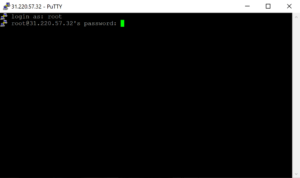The Linux diff package is a command-line tool that is used to find the differences between two files. It is a part of the GNU Core Utilities and is available on most Linux distributions. The diff command compares two files line by line and displays the differences between them. It is a powerful tool that is commonly used for various purposes such as comparing code changes, finding differences in configuration files, and identifying changes in log files.
What does diff do?
The diff command compares two files and outputs the differences between them. It identifies lines that are added, deleted, or modified in the second file compared to the first file. The output of the diff command is displayed in a unified diff format, which shows the added and deleted lines with a + or – sign respectively. It also provides context lines to give a better understanding of the changes.
Where is diff used?
The diff command is widely used in various scenarios, including:
- Software development: Developers use diff to compare code changes between different versions of a file or between branches in a version control system.
- System administration: System administrators use diff to compare configuration files and identify changes made to the system.
- Testing: Testers use diff to compare expected and actual outputs of test cases and identify any discrepancies.
- Documentation: Writers use diff to track changes made to documentation files and review edits made by collaborators.
Programming languages used to build diff
The diff command is written in the C programming language. It is a part of the GNU Core Utilities, which are primarily written in C. The C programming language is known for its efficiency and low-level system access, making it suitable for building command-line tools like diff.
Installation
Supported Operating Systems
The diff command is available on most our VPS with Linux distributions, including:
- Ubuntu VPS
- Debian VPS
- CentOS VPS
- Fedora VPS
- Arch Linux VPS
Installation on Ubuntu and Debian
To install the diff package on Ubuntu or Debian, open a terminal and run the following command:
sudo apt-get install diffutils
This will install the diff package along with other utilities provided by the diffutils package.
Installation on CentOS and Fedora
To install the diff package on CentOS or Fedora, open a terminal and run the following command:
sudo yum install diffutils
This will install the diff package along with other utilities provided by the diffutils package.
Installation on Arch Linux
To install the diff package on Arch Linux, open a terminal and run the following command:
sudo pacman -S diffutils
This will install the diff package along with other utilities provided by the diffutils package.
Usage and Examples
Basic Usage
The basic syntax of the diff command is as follows:
diff [options] file1 file2
Here, file1 and file2 are the names of the files to be compared. The options are used to modify the behavior of the diff command.
Example 1: Comparing two files
Let’s say we have two files, file1.txt and file2.txt, with the following contents:
file1.txt:
This is file 1. It contains some text.
file2.txt:
This is file 2. It contains some text.
To compare these two files and display the differences, we can run the following command:
diff file1.txt file2.txt
The output will be:
1c1 < This is file 1. --- > This is file 2.
This output indicates that the line “This is file 1.” in file1.txt has been replaced with the line “This is file 2.” in file2.txt.
Example 2: Ignoring whitespace changes
The diff command provides options to ignore whitespace changes when comparing files. This can be useful when comparing files with minor formatting differences. To ignore whitespace changes, we can use the -b or –ignore-space-change option.
Let’s say we have two files, file1.txt and file2.txt, with the following contents:
file1.txt:
This is file 1. It contains some text.
file2.txt:
This is file 1. It contains some text.
To compare these two files and ignore whitespace changes, we can run the following command:
diff -b file1.txt file2.txt
The output will be:
The output is empty, indicating that there are no differences between the two files when whitespace changes are ignored.
Similar Commands and Benefits
There are several similar commands and tools that serve a similar purpose to the diff command. Some of them include:
- colordiff: colordiff is a wrapper for the diff command that provides colorized output, making it easier to read and understand the differences between files.
- wdiff: wdiff is a word-based diff tool that compares the differences between two files at the word level. It provides a more granular view of the changes and can be useful for comparing text documents.
- vimdiff: vimdiff is a built-in diff tool in the Vim text editor. It allows users to compare and merge changes between two files within the Vim interface.
The diff command has several benefits compared to these similar tools:
- Availability: The diff command is a part of the GNU Core Utilities and is available on most Linux distributions by default.
- Flexibility: The diff command provides various options to customize the comparison process, such as ignoring whitespace changes, ignoring case, and specifying the number of context lines.
- Integration: The diff command can be easily integrated into scripts and automation workflows, allowing for automated comparisons and analysis of files.
Script Examples
Example 1: Automated File Comparison
This script compares two files and outputs the differences to a separate file:
#!/bin/bash
diff file1.txt file2.txt > differences.txt
This script compares file1.txt and file2.txt and saves the differences to a file named differences.txt.
Example 2: Continuous Integration Test
This script is used in a continuous integration environment to compare the expected and actual outputs of a test case:
#!/bin/bash
expected_output=$(cat expected_output.txt)
actual_output=$(./run_test.sh)
diff <(echo "$expected_output") <(echo "$actual_output")
This script runs a test case using the run_test.sh script and compares the expected output (stored in expected_output.txt) with the actual output. It uses process substitution to pass the output of the echo commands to the diff command.
Example 3: Configuration File Change Detection
This script monitors a configuration file for changes and sends an email notification when a change is detected:
#!/bin/bash
previous_checksum=$(md5sum config.ini | awk '{print $1}')
while true; do
current_checksum=$(md5sum config.ini | awk '{print $1}')
if [[ "$current_checksum" != "$previous_checksum" ]]; then
echo "Configuration file has changed. Sending email notification..."
# Send email notification code goes here
previous_checksum="$current_checksum"
fi
sleep 60
done
This script uses the md5sum command to calculate the checksum of the config.ini file. It compares the current checksum with the previous checksum and sends an email notification if a change is detected. The script runs in an infinite loop and checks for changes every 60 seconds.
List of Functions and Constants
| Function/Constant | Description |
|---|---|
| diff | Compares two files and displays the differences |
| colordiff | A wrapper for diff that provides colorized output |
| wdiff | A word-based diff tool that compares differences at the word level |
| vimdiff | A built-in diff tool in the Vim text editor |
Conclusion
The diff command is a powerful tool for finding differences between two files. It is widely used by developers, system administrators, testers, and writers to compare code changes, identify configuration changes, test outputs, and track document edits. The diff command is written in the C programming language and is available on most Linux distributions. It provides various options to customize the comparison process and can be easily integrated into scripts and automation workflows. The diff command is a valuable tool for anyone working with files and is an essential part of the Linux command-line toolkit.

This article incorporates information and material from various online sources. We acknowledge and appreciate the work of all original authors, publishers, and websites. While every effort has been made to appropriately credit the source material, any unintentional oversight or omission does not constitute a copyright infringement. All trademarks, logos, and images mentioned are the property of their respective owners. If you believe that any content used in this article infringes upon your copyright, please contact us immediately for review and prompt action.
This article is intended for informational and educational purposes only and does not infringe on the rights of the copyright owners. If any copyrighted material has been used without proper credit or in violation of copyright laws, it is unintentional and we will rectify it promptly upon notification. Please note that the republishing, redistribution, or reproduction of part or all of the contents in any form is prohibited without express written permission from the author and website owner. For permissions or further inquiries, please contact us.



